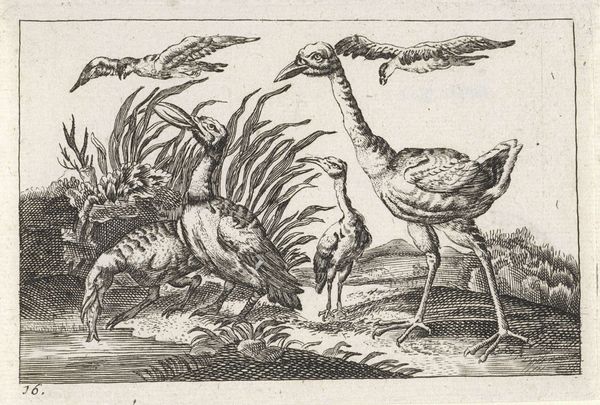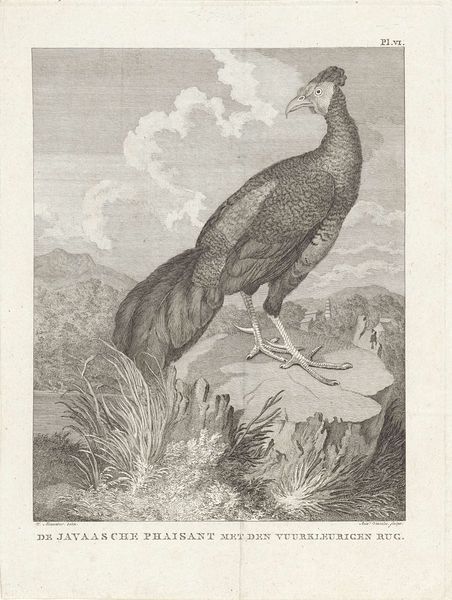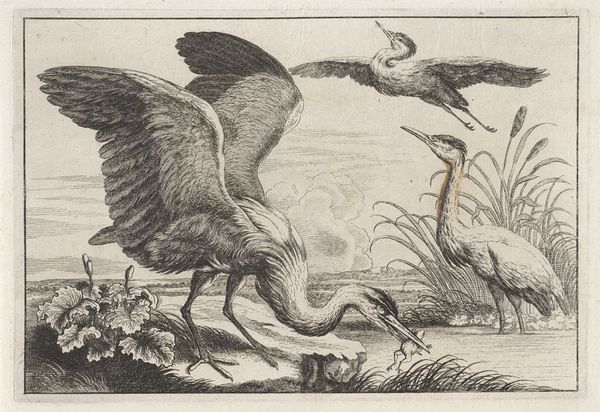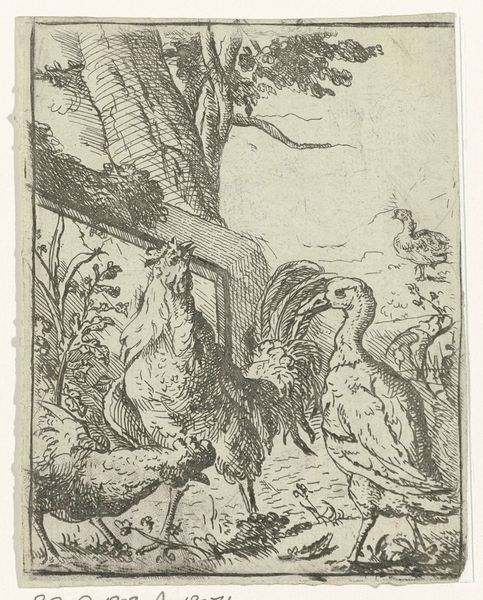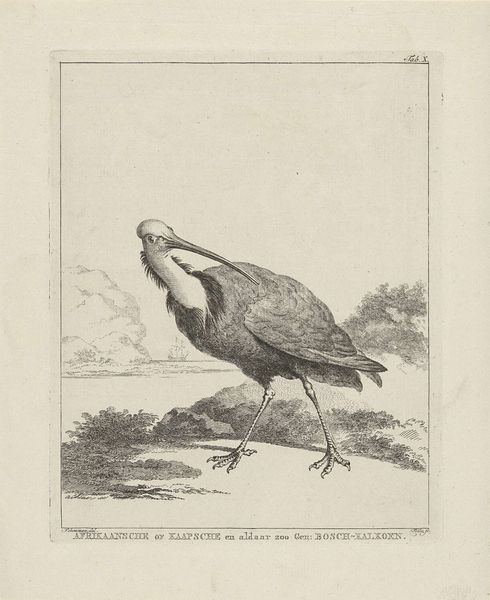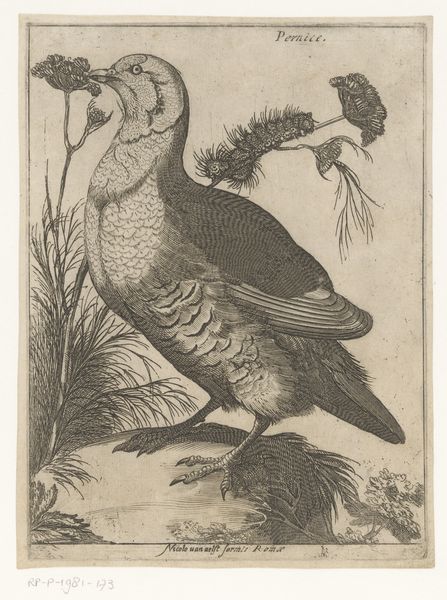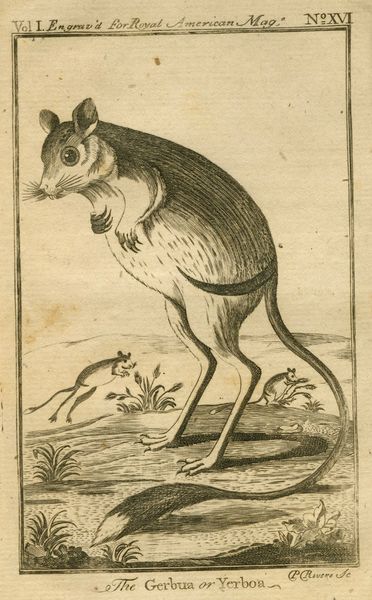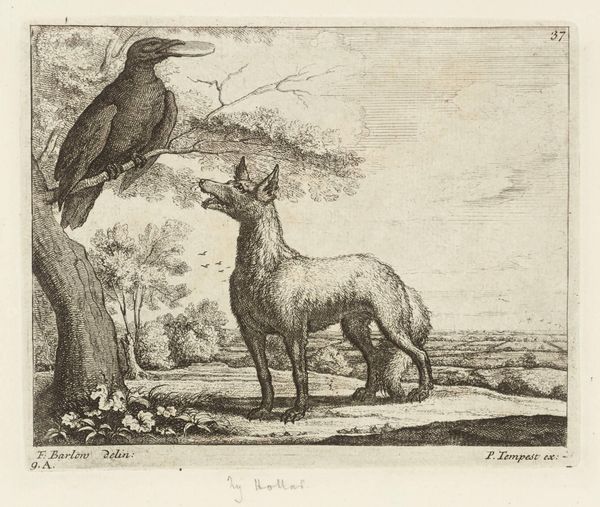
drawing, print, etching
#
drawing
#
baroque
#
animal
# print
#
etching
#
landscape
#
figuration
Dimensions: height 281 mm, width 181 mm
Copyright: Rijks Museum: Open Domain
Curator: Here we have "Two Birds: a Bird of Paradise and an Amboina Ibis", a print made by Jan Goeree between 1680 and 1731. It’s a rather striking composition. Editor: Indeed! My first impression is how it evokes a slightly melancholic, almost surreal atmosphere. The meticulous details contrast oddly with the fantastic landscape backdrop, giving it a dreamlike quality. Curator: The dreamlike quality likely stems from its origins within the context of early scientific illustration, and the desire to classify and understand exotic species encountered during colonial expansion. Birds like these became symbols of newfound territories, displayed almost as trophies of exploration. Editor: You know, seeing the Ibis depicted with these bizarre contraptions hanging from its beak… they strike me as odd instruments of restraint. Symbolically, does this suggest a curbing of natural freedom, a control of the exotic world? Curator: It is important to remember the social hierarchies inherent at this time. The 'Amboina Ibis', an imposing, standing figure in this picture plane, would have stood in direct contrast with the 'Bird of Paradise', perched higher, but implicitly denoting class difference within the global structures of power. Editor: I see that in the hierarchy implied in this avian portrait. It echoes how artists portrayed the divine right of kings, the higher estate given dominion above others. Perhaps here we are asked to consider our right to observe nature itself? Curator: It definitely invites consideration on that question, placing on center stage the conflict between the allure of exotic species, and the implied control of those animals for display and societal prestige, both intertwined with the visual power held through print culture. Editor: Absolutely. These images solidified not only knowledge but also ownership of the natural world. That resonates even now. Curator: Agreed. Considering that is why looking at pieces like this is so relevant today. Editor: A curious reminder of the world through the lens of ambition and acquisition.
Comments
No comments
Be the first to comment and join the conversation on the ultimate creative platform.
